Jazz Festival Saalfelden 2023
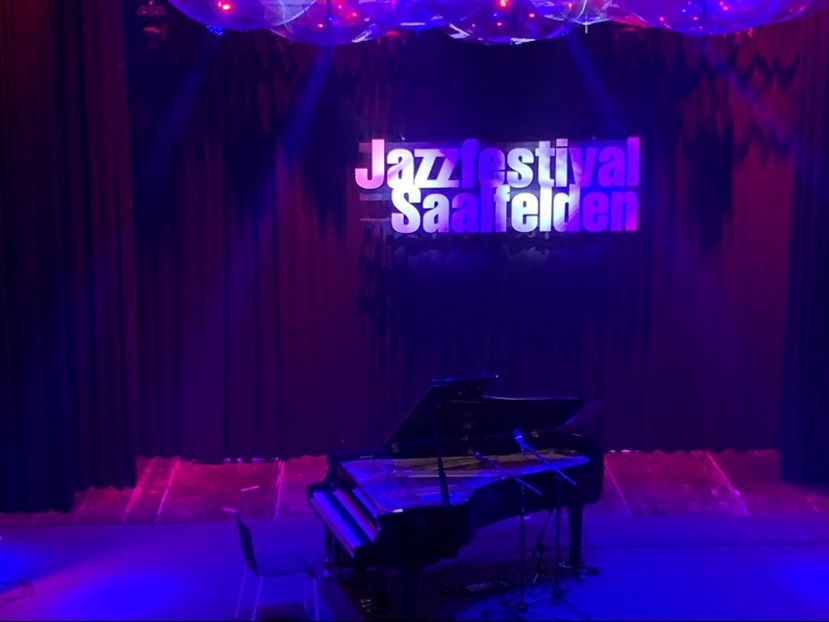
Here is a late, matured review of a summer festival of a special kind in Saalfelden, Austria. It just so happens that the festival's winter stopover is about to take place with its attractive 3days-program from January 27-29 with six concerts at various venues:
DAY 1
A Norwegian-Austrian unit called Per “Bass Viking” Mathisen’s SAXOPHONE INFERNO, Louis Sclavis’ LES CADENCES DU MONDE and Franklin Kiermyer’s “SCATTER THE ATOMS THAT REMAIN”
DAY 2
Andreas Scherer’s Swiss Unit HILDEGARD LERNT FLIEGEN, the duo Barry Guy-Jordina Millà’s STRING FABLES and the sextet SPINIFEX from Amsterdam
DAY 3
YOU PROMISED ME POEMS, Austrian-Spanish duo SIGMUN (Florian Sigharter/Carles Muñoz Camarero), TJ & THE GROOVE BOOTS
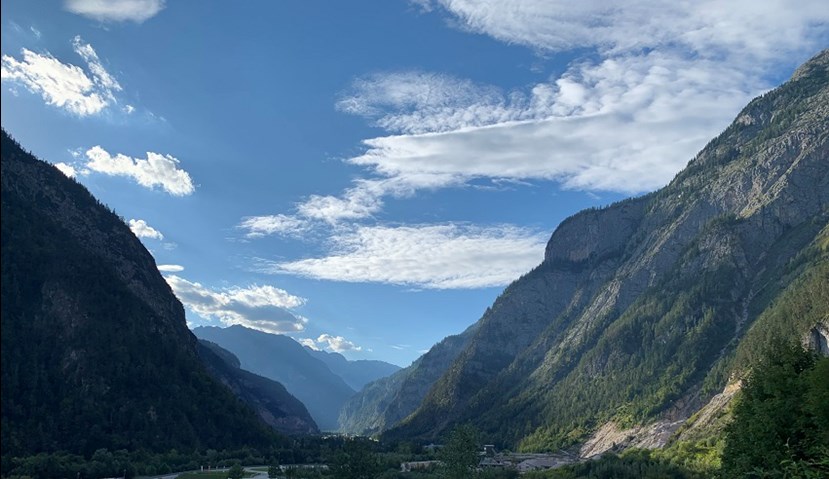
Saalfelden feeling
There exists a distinctive Saalfelden feeling consisting of a couple of facets: an impressive alpine landscape, warm and attentive hospitality, good organisation, open mindedness and community spirit, fantastic sites and good, dynamic and challenging music. It is remarkable how this all goes together and reinforces each other. Saalfelden may then be a small town, small in spirit and enterprise it is by no means. As a consequence the Saalfelden festival attracts many visitors from outside the region and outside Austria. It is a lively great meeting point at the end of the summer, all strengthened by the care of Music Austria. The 2022 edition, that took place August 18 - 21, turned out a highly successful in terms of ticket sale. Together with its content the festival, led by gespann (adequate German expression for it) of Mario Steidl and Daniele Neumayer, seems to follow a stable, promising course.
The festival unfolds along a number of tracks - City Tracks, Short Cuts, Mountain Tracks - at a couple of sites in town - all on short walking distance - and in the mountains (hike tours). Its dynamics emerge from an interplay of residential artist’s projects, occasional Saalfelden groupings of musicians, the impro sessions (X invites Y), commissions, fixed configurations on the main stage, at Kunsthaus Nexus, printing house Fuchs, Gruberhalle, Stadtpark stage, Brücklwirtshaus and various mountainous sites. Kunsthaus Nexus and the roof terrace of the Congress Centre are ideal meeting points and hang locations where audience and musicians mingle.
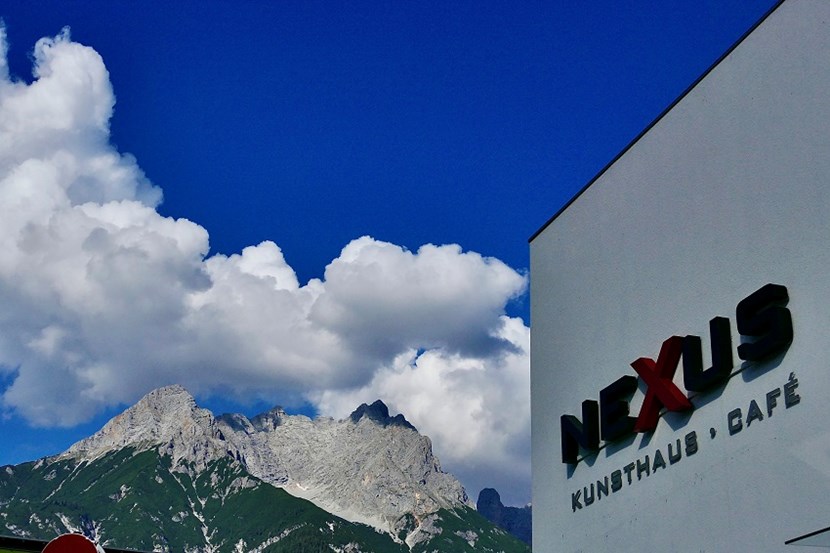
Craftsmanship, architecture, design
The festival locations of Nexus and Printing House/Bookbindery Fuchs, on 5 minutes walking distance, are striking facets of the Saalfelden cosmos. The building of the bookbindery bears its central watchword on the blueish outer wall: “Handwerk verbindet (Craft Connects)”. The bookbindery is a regular festival place especially for the improv sessions. Many have taken place on the first floor there. The special environment aids visitors’ memory of it also after years. The first floor is a large open workshop full of solid old handicraft machines, materials and products in progress. It is an immediately inspiring, connecting, challenging and charging space. Musicians and audience have to use the limited interspaces between the machines and work benches.
The space stays for a long tradition of giving shape to printed words, illustrations, ornamentation and ways of binding. The other stories offer still more wonders of that rich and still fascinating craft. Christian Fuchs ran this special reign for long years, built it up, maintained it, renovated it and even succeeded to survive the Corona years, the hardest confrontation to cope with.
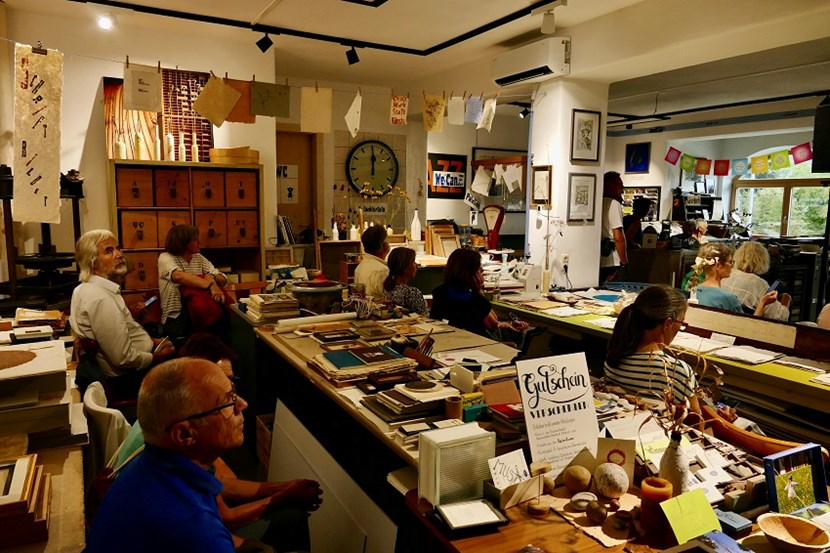
Attending impro sessions in this space evoke a special way of concentration of both musicians and listeners and connects both in a special way in the workshop place. It is funny when musicians wire their electronics there in the middle of the old machinery, a strange contrast between the liquid and fleeting and the analogue chiseled and solid physical and mechanical. In 2021 the vocals of an improvisation were transferred to a physical printing process of a very long sentence. The paper roll of the print was then stored in a bottle.
The connection between artistry, applied art and art by the way can be seen in Saalfelden’s cityscape on a lot of outer sides of houses.
Kunsthaus Nexus, opened in 2002 as an art center of regional importance, is a distinct example of recent modern architecture (same as the school on its opposite). It’s an easily accessible building with an immediate ‘home-feeling’. On the outside it offers a bold architectonical counterpoint to the uprising mountains. That it is directly neighboured by a drive-in McDonalds is a sign of our times but happily Nexus towers over it.
Catchment, coverage, frequencies
In four days the festival presented 65 concert in 12 venues. Hence Saalfelden counts as one of the bigger festivals but it is still clearly overview-able and communal. Groups and single musicians acting as soloists or in occasional combinations came from 11 countries: USA (7), Norway (5), Germany (5), France (5), Portugal (2), Switzerland (2), Sweden (2), Spain (1), Italy (1), Belgium (1), Russia (1). And, of course most came from Austria (20). It is all to check and read about (easily to do on the festival app of rare excellent quality):
Fabian Rucker, HARi ViDERCi & Herbert P (Herbert Pirker), Lukas Koenig, Lukas Kranzlbinder, Lorenz Raab, Alois Eberl, Otto Lechner, Alex Miksch, Christoph Cech, Yukno, Katharina Ernst (Ventil, Sortie d’Atelier, EXTRAMETRIC), Gewürztraminer & Der Gemischte Satz, Raphael Wressnig & The Soul Gift Band, OstBeatBand, Felix Kramer, Emersound, Candlelight Ficus, Lehmanns Brothers, Sharktank, Sinfonia De Carnaval.
It is not easy to count the exact numbers. The numbers here should be considered as indications. Obviously a greater number of single musicians engaging in a diversity of occasional combinations took part in the festival in a greater number of Impro Sessions (X invites Y). Two of them had residencies: Katharina Ernst (Austria) and Gard Nilssen (Norway).
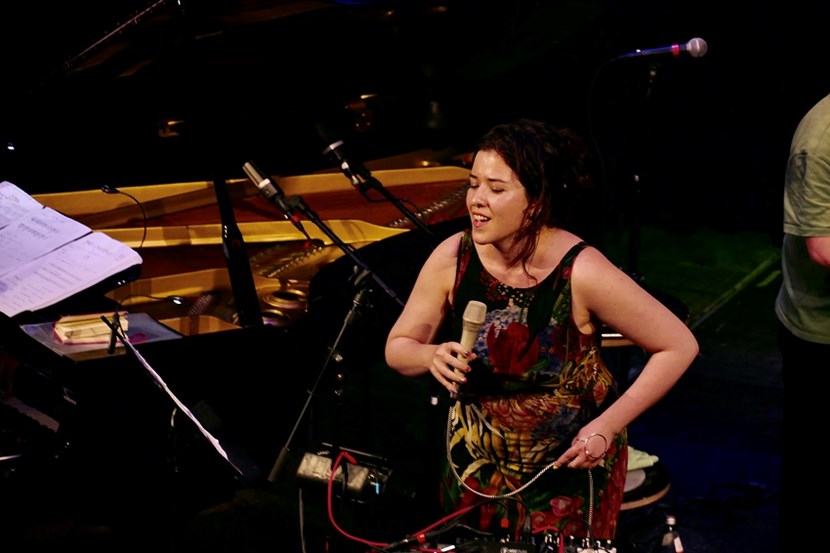
Other single musicians also performed in different constellations: Çansu Tanrikulu (photo), Lukas Kranzlbinder and Cuong Vu performed in four constellations, Ted Poor in three constellations and a greater number in two different performances. When counting I didn’t keep to nationality or origin but to place of residence/work. So, Petter Eldh is Swedish, Jim Black is US-American and Cansu Tanrikulu is Turkish but all three reside and work in Berlin. Actually all musicians from Germany were from Berlin. Spiritual Unity Kranzlbinder is a nice example for the difficulty to assign a performing unit to a country. The unity comprises musicians from 4 countries: Lukas Kranzelbinder (b), Delphine Joussein (fl), Goran Kajfes (tr), Jim Black (dr). It shows the high happy, colourful hustle and bustle factor of the festival.
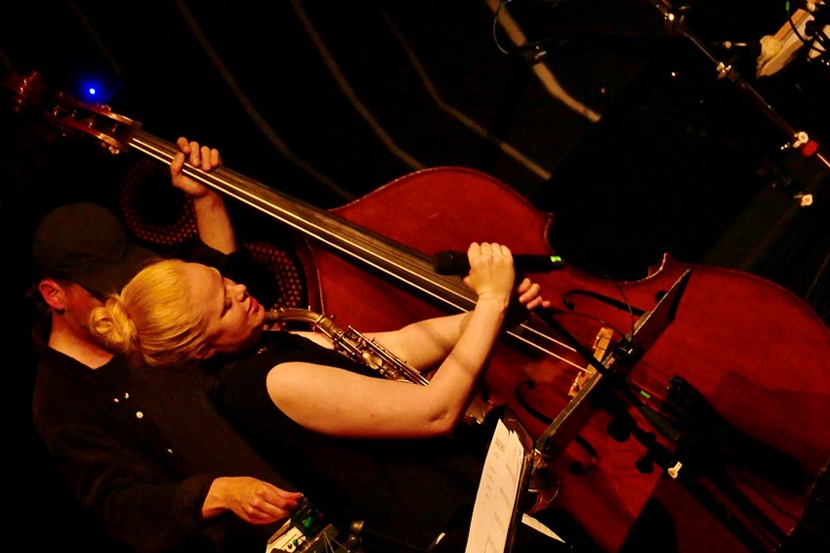
A commission was assigned to saxophonist Mette Rasmussen (photo) from Trondheim. She realised her commission in a new quartet called Økse (Axis) with Petter Eldh (b, key) from Berlin and Savannah Harris (dr) and Val Jeanty (sound chemist) from New York. Young Austrian saxophonist star Fabian Rucker impressively powerful performed with his quintet a pre-covid commission he not yet had the chance to play in public.
Another temporary performance community got shape in the Melting Pot Program that gathers young promising musicians delegated by festivals/venues in Ghent, Oslo, Berlin, Wroclaw and of course Saalfelden: Hannę de Backer ((bar-sax), Handelsbeurs Ghent), Zbigniew Chojnacki (accordion, electronics), Jazztopad Wrocław), Emil Storløkken Åse ((g), Nasjonal Jazzscene Oslo), Beate Wiesinger ((b), Saalfelden), Evi Filippou ((vibraphone/dr/perć), Jazzfest Berlin).
All these installations contain a larger number of flammable nodes that the audience is offered to immerse in and get known with. Saalfelden had a good timing in the alternation of music and breaks as well as workable overlap of concerts but nonetheless it was impossible to attend and follow everything. The next few paragraphs relate primarily to the concerts I've seen, covered by a number of keywords to start with ‘Spectacular’.
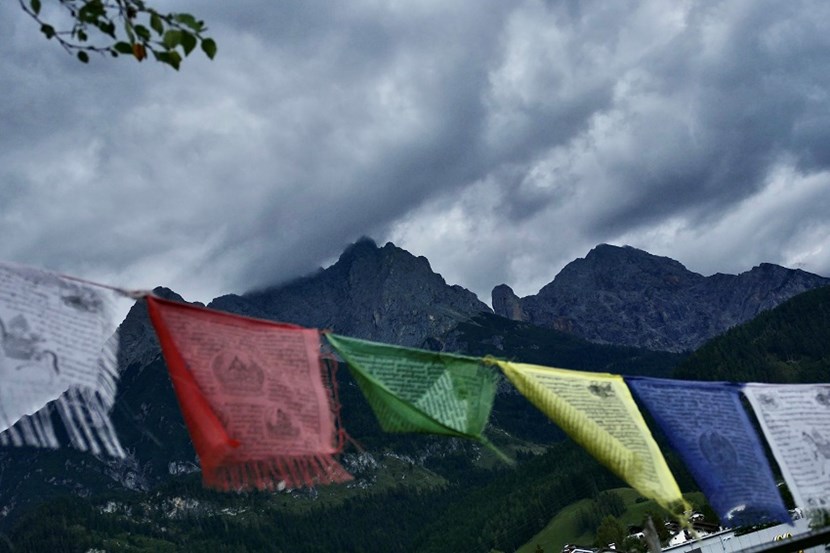
Spectacular
Of course, festivals strive to offer something spectacular and Saalfelden is not different, although ‘spectacular’ can of course be understood and experienced in different ways. For this Saalfelden edition these concerts belong to the category “spectacular”: Pussy Riot, Gard Nilssen Super Sonic Orchestra, Ventil, Rite of the Trio, Nout, Isaiah Collier & The Chosen Few and HARi ViDERCi & Herbert P. It can be extreme, radical, courageous, brand-new with high expectation, outside the defined lines, beyond the beaten tracks, sassy, overbold, foolhardy, full of splendid fireworks etc..
Saalfelden made a spectacular choice in its reaction on the Russian aggression against Ukraine by programming the Russian company of Pussy Riot that was touring with its anti-war performance through Western Europe with Pussy Riot founder, Maria “Masha” Alyokhina on stage, who had not only managed to escape her home arrest but also to leave Russia. It had clearly a shaking up shocking effect and was a public manifestation of Russian artists showing their rejection of the war. Most urgent in the present situation however is a support and strengthening of culture and art from Ukraine. Russia has purposefully destroyed more than 500 Ukrainian art and cultural buildings from concert halls to museums following an old tradition of aggressive domination.
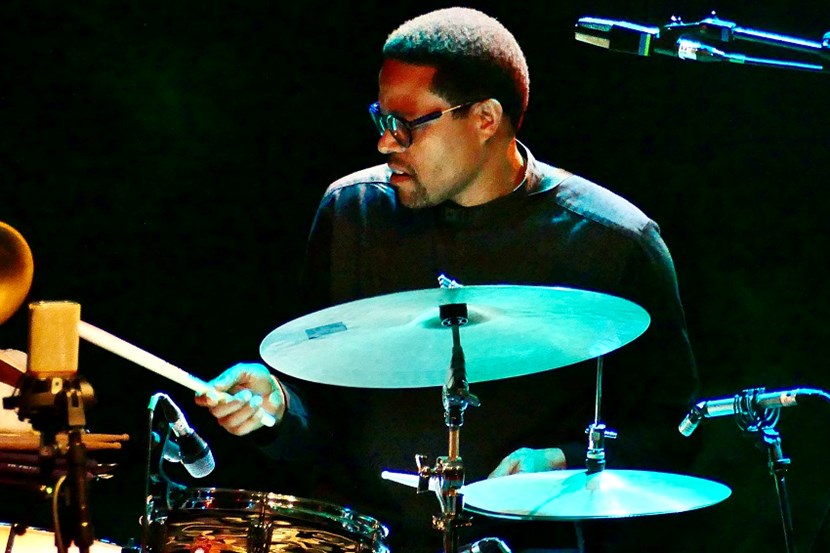
Spectacular was also the Gard Nilssen Super Sonic Orchestra with its three drummers, three bassists and 11 horns that could make an overwhelming big noise and consequently did with great self-kicking pleasure. Of a different category was the group Ventil of artist in residence Katharina Ernst: extreme in volume, darkness, savageness and straying voice color. Portuguese Rite of the Trio provoked with a wild extended performance style, and the three women of Nout, Delphine Joussein (flute), Rafaëlle Rinaudo (electric harp) and Blanche Lafuente (drums) attacked with a stormy straight into your face energy of high dynamics and a disarming high joy of fun factor. Emile Parisien Louise Sextet had a spectacular line-up with Theo Crooker on trumpet and Nasheet Waits (photo) on drums and played a colourful splendid set of the typical Parisien urgency.
Isaiah Collier & The Chosen Few is a new force on the international scene distinguishing itself by its high spiritual intensity of chant- and prayer-like playing. The group totally focuses on ignition of that energy in long rides. In Saalfelden the audience could intensively experience the group’s long stretched energy release and mighty ascension of their playing. It was a stupendous experience. The four musicians, Isaiah Collier, Jordon Williams (p), Jeremiah Hunt (b) and Michael Shekwooga (dr) generated a power greater than themselves.
Likewise sensational and very much uniquely Austrian was the duo called HARi ViDERCi & Herbert P. HARi ViDERCi’s face wrapped in aluminium is made invisible for acting inkognito. ‘HIS’ name is a spoonerism of Italian arrivederci/goodbye.
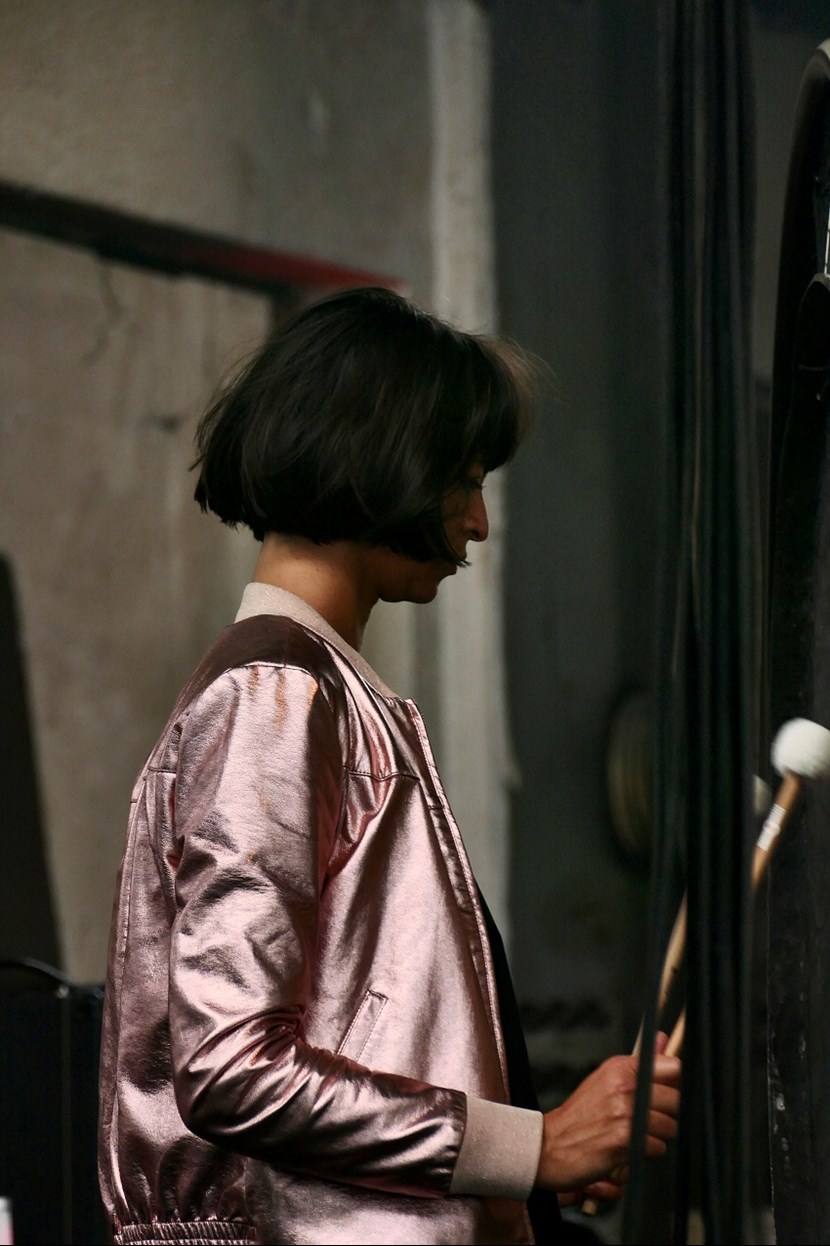
Katharina Ernst (photo) is not only a drummer but an artist that (re)contextualises genres and art forms in her performances. In that perspective she also belongs to the category ‘new accents’ (see below). When performing she manifests herself as austere, rectilinear, straightforward and radically demanding. It seems she works more in tableaus and an approach of massive ‘objets’ positioned in musical space. For me the sound massiveness and the darkness of the Ventil performance came over as quite static, which had an extra enlarging effect. I was not sure, if it was a situation of still waiting for Godot or a situation of the kind that Vladimir and Estragon have long left already. With the vocals of Johanna Sophie Baader involved, the Ventil-performance had an element comparable to Paal Nilssen-Love’s Circus with the voice of Juliana Venter, but the effect and dynamics were quite different. Ernst’s way of working sharpens the senses for things we take for granted. The performance was discomforting at a comforting place.
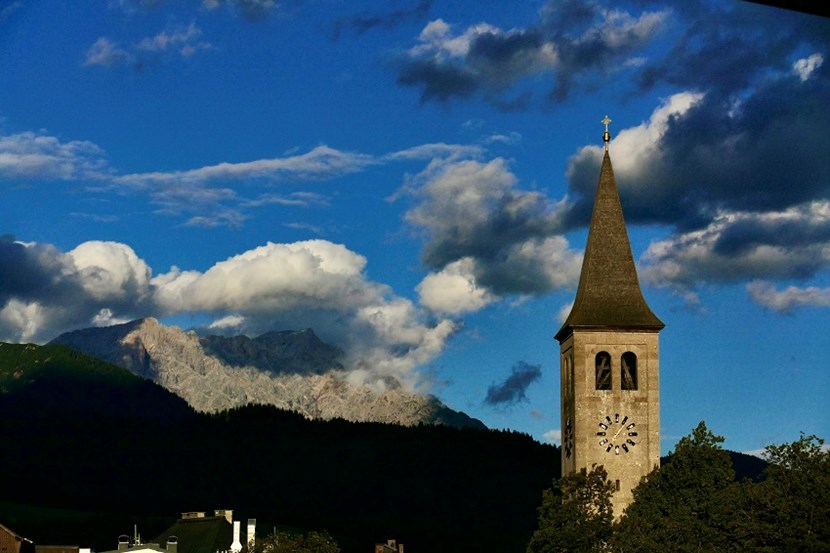
New on radar/in vision field
‘New’ is a relative, context-dependent notion. New for Saalfelden (and surely other festivals) were Portuguese large ensemble L.U.M.E and Spanish trumpeter Alba Careta’s quintet as well as Belgian’s Black Flower. It’s all groups that have been active for quite a while but are noticed in Central Europe only now. In recent years Saalfelden has happily developed attention to music and musicians from the southern part of Europe. L.U.M.E ensemble has developed its very own approach to make music in a larger group.
L.U.M.E, this 15-piece ensemble from Lisbon, recently found its way more and more north- and eastwards and happily also landed at the Sea of Stone (Steinernes Meer). It lived up to its reputation of staggering ardent nimbleness, but also showed its Keatonesque about-turns and puzzlement moments. The foundation is laid by the compositions of leader Marco Barroso, who clearly preferred to let the ensemble itself seek, unfold and drive its dynamics. L.U.M.E was a welcome counterpoint in this year’s Saalfelden orchestra of orchestras: Christoph Cech Orchestra, Trondheim Jazz Orchestra and Gard Nilssen Supersonic Orchestra.
Spanish trumpeter Alba Careta stood out through her colorful passionate playing and Belgian devils of Black Flower made it festive by great passages through a diversity of music cultures, reshaping of songs of the others in their very own idiomatic way.
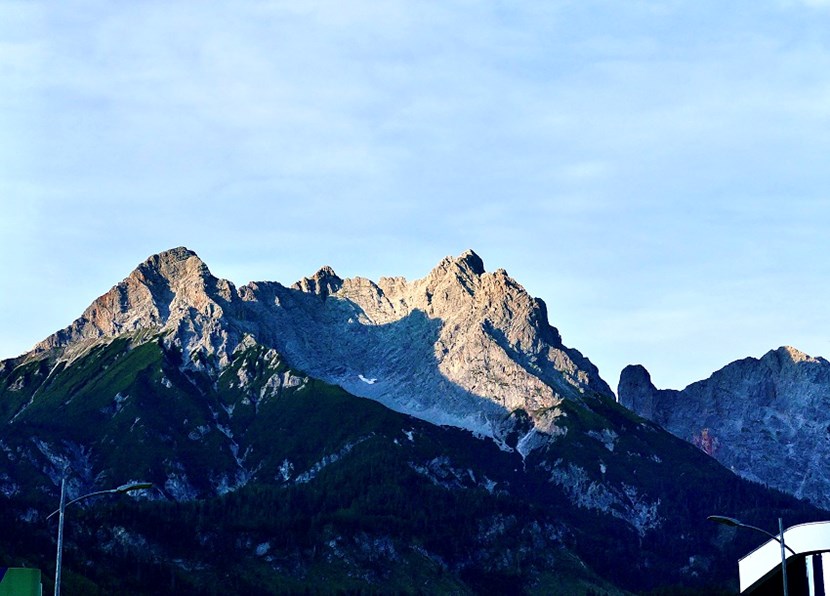
Overabundance
The five musicians of Melting Pot, Hannę de Backer (bar-sax), Zbigniew Chojnacki (accordion, electronics), Emil Storløkken Åse (g), Beate Wiesinger (b) and Evi Filippou, vibraphone/dr/perc (photo), highly developed musicians in their own right, played an exciting and abundantly varied set coming forth from their prior work meeting in Saalfelden. The richness of ideas that they all introduced in their common playing however became overabundant in the long run which lowered my initial listening pleasure. Just a few elaborated lines could have been more beneficial. This is probably a consequence of the unrestricted open concept of Melting Pot. But, nonetheless to get known to their voices and personalities in that special context at the bookbindery’s workshop was more than worthwhile. You will for sure hear and see more of them in years to come.
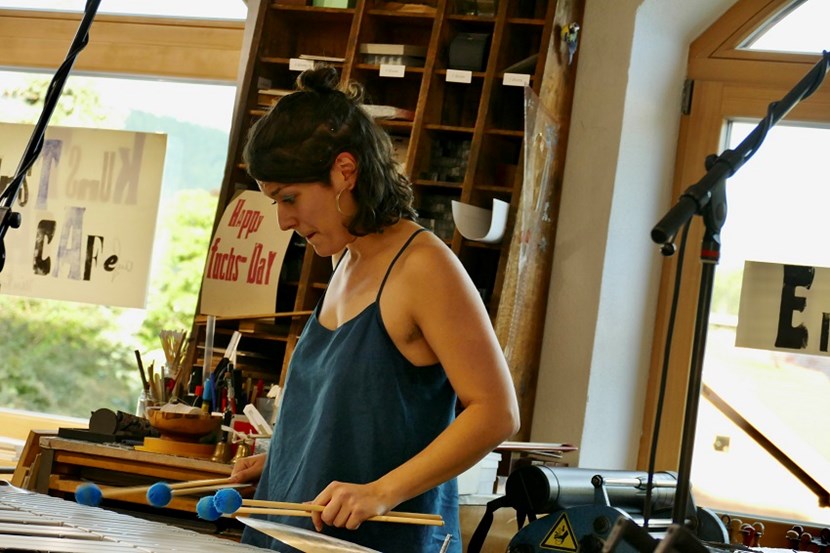
Flux, collaging
Vocalist Çansu Tanrikulu from Berlin had four dynamic and agile appearances during the festival: in Piled Up, as part of Usine, with Otis Sandsjö and Dan Nicholls as well as with Jim Black and Nick Dunston, a considerable range. She is not showing bel canto or exalted shrieking cries. With her voice she constantly permeates layers of imagination and reality fragments, which is in a sense more operating like a collaging and estranging visual artist (a.o. Edward Kienholz or Merzbau of Kurt Schwitters come to mind). In the medium of music, it leads to whirling layers and accumulations and accumulations of sounds, vectors over broken edges, etc. She intensely lives it up and brings it to life.
At moments Piled Up seemed to be lost in playground phantasies egging each other on at length. On listeners’ side it definitely demands a different kind of immersion and reception to catch and grasp it, get it under one’s skin. It worked fine with the Piled Up constellation (Çansu Tanrikulu (comp, voice, efx), Simon Jermyn (guitar, efx), Nick Dunston (b, efx), Lukas König (dr, efx)). Different was the (new) Usine unit (Çansu Tanrikulu (voice, electr), Declan Forde (p), James Banner (b, electr), Max Andrzejewski (dr), which felt still as in development hinting at more visceral and cutting things to come.
Fishes in electronic waters
I wanted to write here about the multi-various and at times overusing deployment of electronics but decided to refrain from it. It is too deep waters and a rather broad field of plants and practices to deal with here.
I will return to it at another occasion.
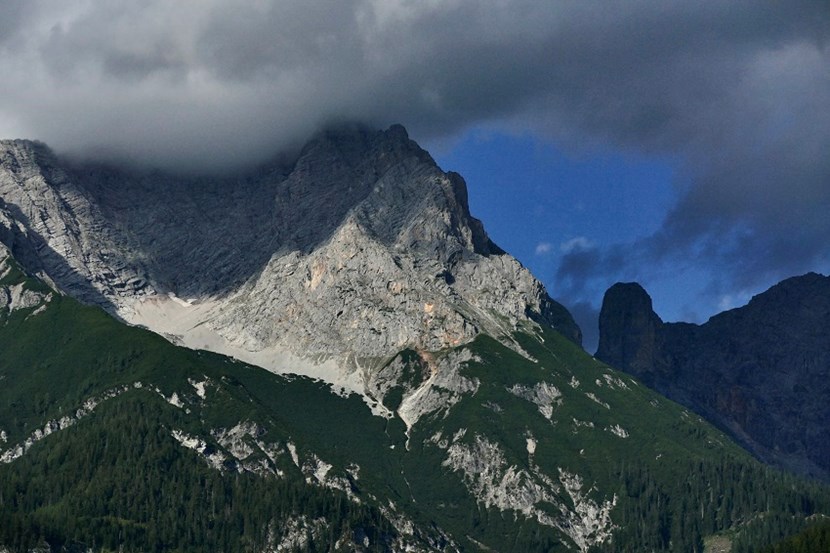
New accents, transformations, extraordinariness
Currently there are many musicians/groups who play at a high level of refinement and elaboration of their music and ride their wave more elegantly or explosively. There are also musicians and groups who expand and transform their music by placing their strengths in newly shaped musical contexts and and let it merge into something distinguished new. For me Paal Nilssen-Love Circus (PNL Circus) and Mette Rasmussen’s Økse were of that category in Saalfelden. Austrian duo HARi VERDERCi & Herbert P. (Herbert Pirker) also has to be included here. From a multitude of musical elements (a.o. Electro Soul, P-Funk) , “bass, drums, and dirt”, they brewed something highly original, up-to-date and uniquely Austrian. Playing with his head aluminium-foiled his appearance gets an extra performative knack and theatrical pointedness of the message. Titles of their music as “Penis”, “Dick”, “Telefon” speak for themselves anyway. It’s a very Viennese thing, fed from the Schmäh vein with its very own way of circumlocution, its game of under- and overstating as well as mental leaps and loudly ruminating. All three units came up with fresh and also crazy music that speaks to a broader audience, make it smile and jump. A lot of extended techniques used in their performances served a natural expressive purpose here primarily.
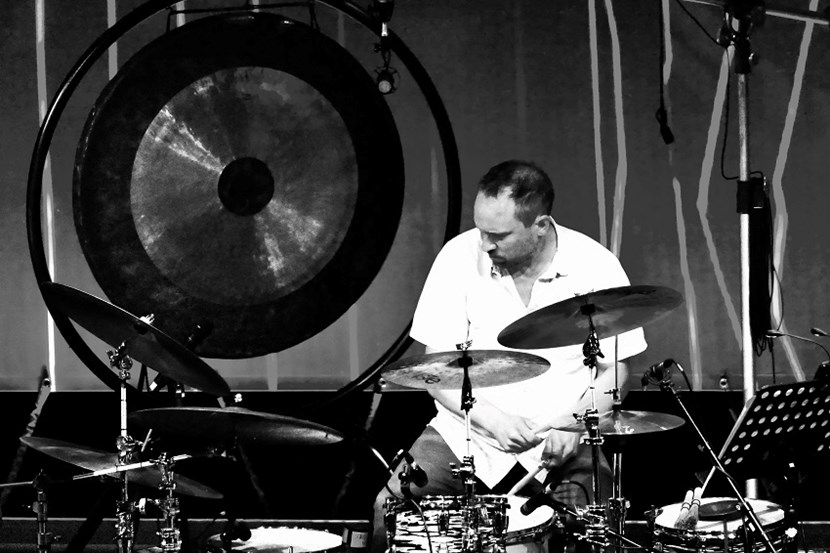
Paal Nilssen-Love’s (photo) rough style of free playing was astonishingly enriched in his new group Circus by operatic vocals, a rich percussive arsenal, Brazilian and other folk instruments in an even interesting line-up - not totally surprising considering his longer passionate cooperation with Brazilian and Ethiopian musicians. We found there the astonishing vocalist Juliana Venter from South Africa, now living and working in Norway, a musical personality in her own right and career covering an amazingly broad range of vocal styles and disciplines. Guitarist Oddrun Lilja is an evident choice given that she recently released an album uniting traces from a greater number of musical cultures around the world. New is also the accordion (Kalle Moberg) in a group of PNL. Thomas Johansson (tr), Signe Emmeluth (as) and Christian Meaas Svendsen (b) are hard core free improvisers that have a longer cooperation with PNL.
Mette Rasmussen, a master of frenetically hard blowing on her saxophone, could be seen also in a new guise with a surprising new line-up gathered in her new group Økse (Axis). It was an extension as well as new integration of her way of operating musically shining new light on her previous qualities as well as extending her expressiveness. It was a great pleasure to see this configuration creating its fresh new thing. They recorded the day after in Saalfelden. Looking forward …
It is astonishing as well as welcome that music belonging to different corners of the field in the past now start to cross-fertilise and yield new qualities of sound and music.
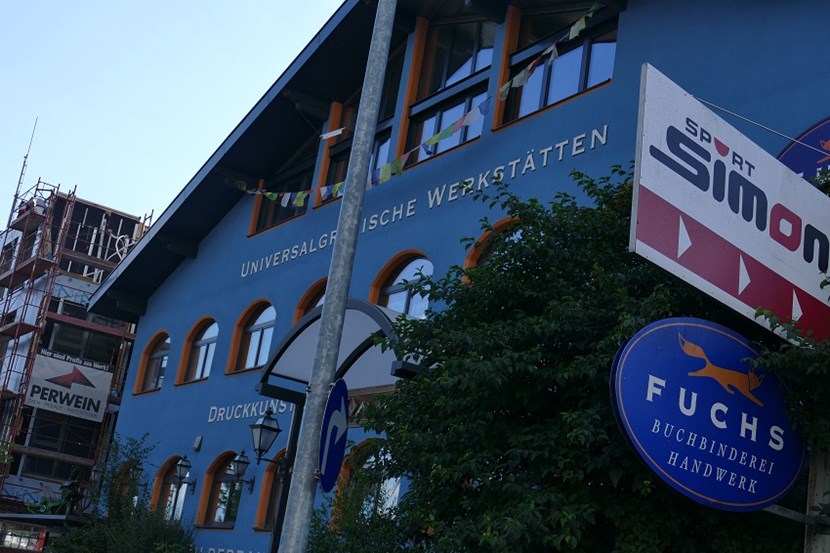
Outstanding/dedicated
Not all spectacular appearances are outstanding vice versa. Close to each other are outstanding and extraordinary musicianship. The predicate ‘outstanding’ applies above all to the solo-concert of Jason Moran at the intimate Nexus venue: a performance of a category and class of itself. He excelled by great discursive wealth and narrative gift in connecting spots from musical history, in relating music to social realities and spirit plus his connectedness to different art forms and dramaturgical framings.
He started quite casual, parlando, and step by step lead the audience along a series of significant landmarks of increasing intensity and density - all on the basis of a clear and trustful self-evidence. No nimbus game, all was what it was and open to take in. And then all of s sudden the temperature increased … He did not leave it at that but went on a trembling expedition into darker tonalities that conjured an ominously rumbling world of sound. It was a non-expectable turn, forceful and memorable, at the end of his concert, a strong trembling sound comment on the present state of our world (if you want to take it as that).
And there was this peculiar group with cello, clarinet/saxophone, bassoon, accordion and percussion haunting the edge of the world, finis terrae - which wasn't only spooky but also vitally roaring, lurching and pushing.
Inspired by Jean Epstein’s dramatic pictures of the earliest days of cinema the five musicians (Vincent Courtois, Robin Fincker, Sophie Bernado, Janick Martin, Sylvain Lemêtre) ignited a great theatre of sounds for surfing ears and sang the song of outfighting greater powers.
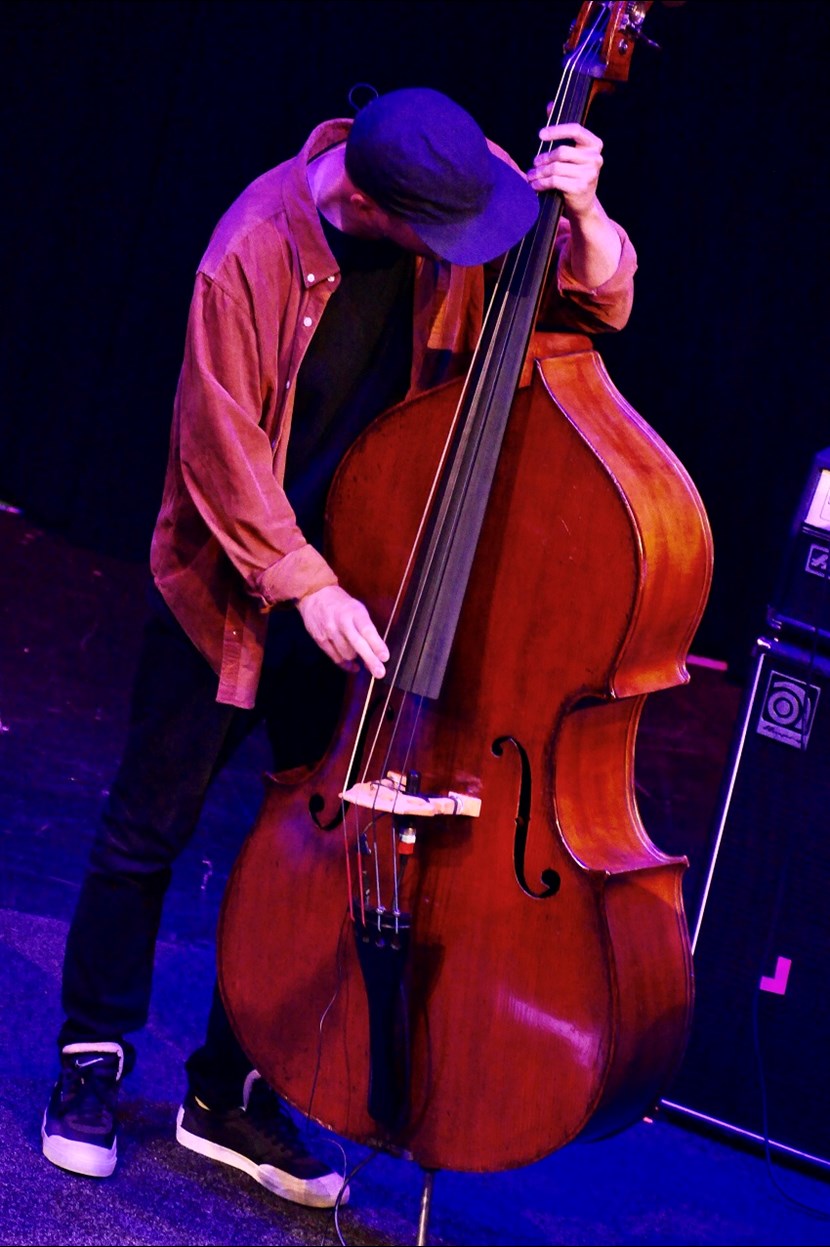
And, matching this image, there was this trio that proved as a rock in the surf: the Acoustic Unity of drummer Gard Nilssen, bassist Petter Eldh (photo) and saxophonist André Roligheten, who all excelled also in other constellations during the festival. It had materiality, braving strength and coherent sense, inner and outer courage and presence.
Schlussendlich: the power, the pleasure and the perspective
The Saalfelden festival covers a broad range and varied spectrum of music in development. It has preferences but doesn’t suggest ‘solutions’ and doesn’t adhere to schools. It provides productive, challenging and confirming impulses that feed and foster vital developments. Saalfelden also functions as productive meeting place/collaboration facility between Austrian musicians and musicians from abroad. Saalfelden has an astounding capacity to mirror and represent impacting developments and is an anticipatory, connecting festival.
Text and photo's © Henning Bolte
Other
In case you LIKE us, please click here:
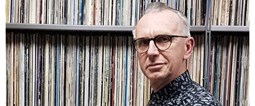
Foto © Leentje Arnouts
"WAGON JAZZ"
cycle d’interviews réalisées
par Georges Tonla Briquet

our partners:
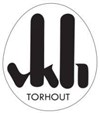


Hotel-Brasserie
Markt 2 - 8820 TORHOUT
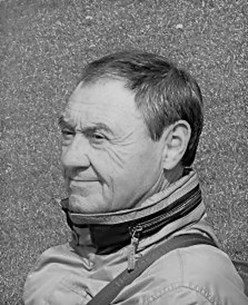
Silvère Mansis
(10.9.1944 - 22.4.2018)
foto © Dirck Brysse
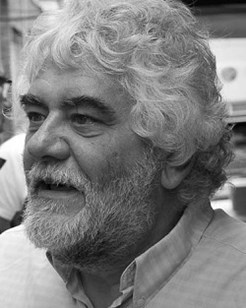
Rik Bevernage
(19.4.1954 - 6.3.2018)
foto © Stefe Jiroflée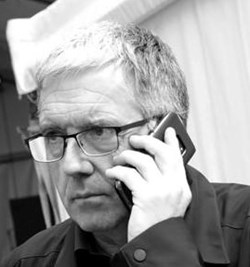
Philippe Schoonbrood
(24.5.1957-30.5.2020)
foto © Dominique Houcmant
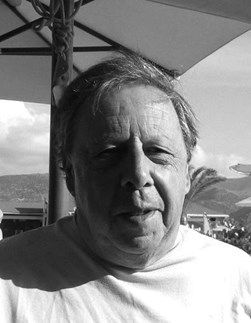
Claude Loxhay
(18/02/1947 – 02/11/2023)
foto © Marie Gilon
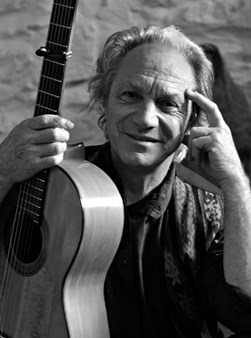
Pedro Soler
(08/06/1938 – 03/08/2024)
foto © Jacky Lepage
Special thanks to our photographers:
Petra Beckers
Ron Beenen
Annie Boedt
Klaas Boelen
Henning Bolte
Serge Braem
Cedric Craps
Luca A. d'Agostino
Christian Deblanc
Philippe De Cleen
Paul De Cloedt
Cindy De Kuyper
Koen Deleu
Ferdinand Dupuis-Panther
Anne Fishburn
Federico Garcia
Jeroen Goddemaer
Robert Hansenne
Serge Heimlich
Dominique Houcmant
Stefe Jiroflée
Herman Klaassen
Philippe Klein
Jos L. Knaepen
Tom Leentjes
Hugo Lefèvre
Jacky Lepage
Olivier Lestoquoit
Eric Malfait
Simas Martinonis
Nina Contini Melis
Anne Panther
France Paquay
Francesca Patella
Quentin Perot
Jean-Jacques Pussiau
Arnold Reyngoudt
Jean Schoubs
Willy Schuyten
Frank Tafuri
Jean-Pierre Tillaert
Tom Vanbesien
Jef Vandebroek
Geert Vandepoele
Guy Van de Poel
Cees van de Ven
Donata van de Ven
Harry van Kesteren
Geert Vanoverschelde
Roger Vantilt
Patrick Van Vlerken
Marie-Anne Ver Eecke
Karine Vergauwen
Frank Verlinden
Jan Vernieuwe
Anders Vranken
Didier Wagner
and to our writers:
Mischa Andriessen
Robin Arends
Marleen Arnouts
Werner Barth
José Bedeur
Henning Bolte
Erik Carrette
Danny De Bock
Denis Desassis
Pierre Dulieu
Ferdinand Dupuis-Panther
Federico Garcia
Paul Godderis
Stephen Godsall
Jean-Pierre Goffin
Claudy Jalet
Chris Joris
Bernard Lefèvre
Mathilde Löffler
Claude Loxhay
Ieva Pakalniškytė
Anne Panther
Etienne Payen
Quentin Perot
Jacques Prouvost
Renato Sclaunich
Yves « JB » Tassin
Herman te Loo
Eric Therer
Georges Tonla Briquet
Henri Vandenberghe
Peter Van De Vijvere
Iwein Van Malderen
Jan Van Stichel
Olivier Verhelst



